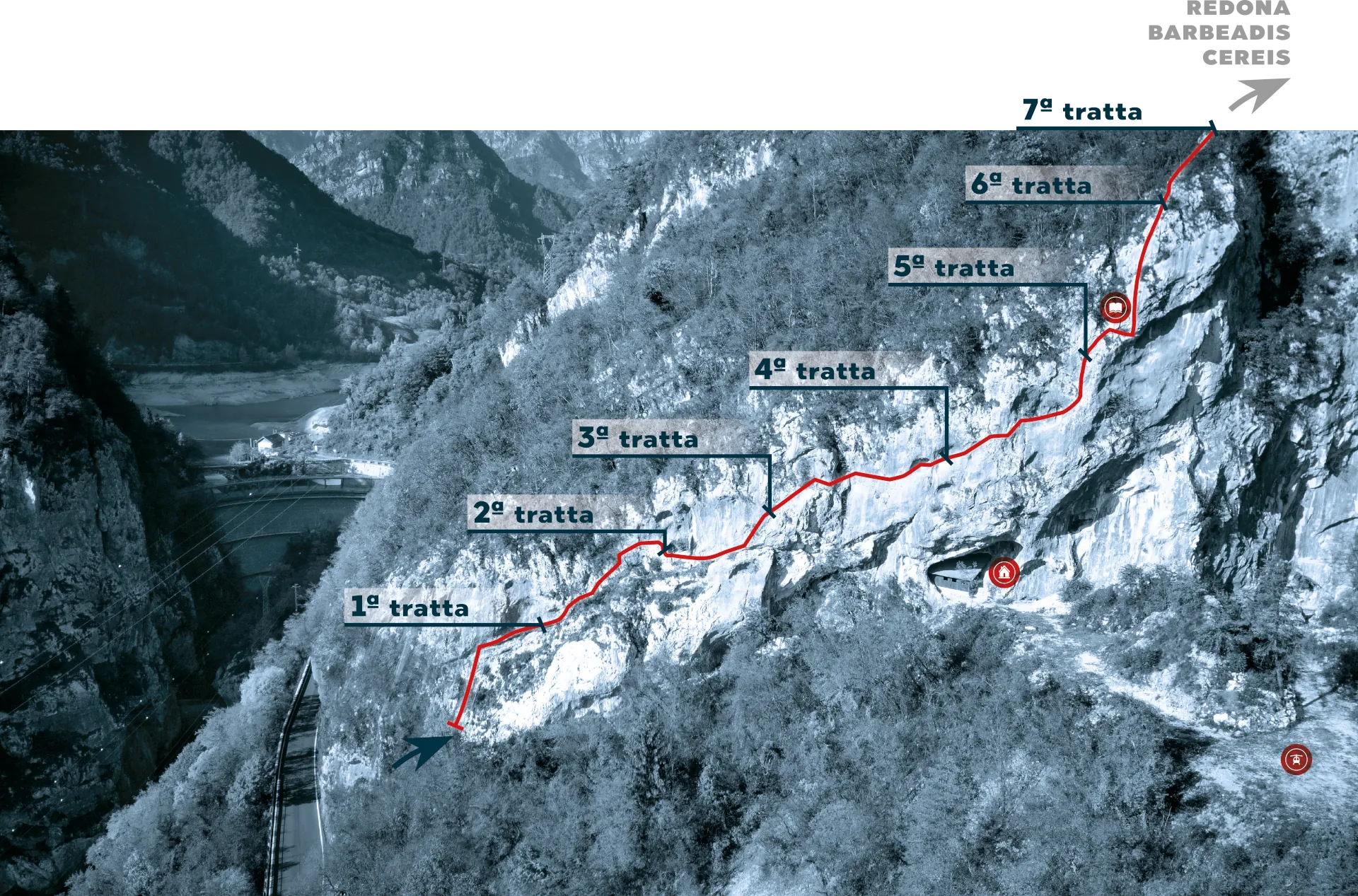WELCOME
This area has been known since ancient times for the quality of the stone that was extracted from the quarry known as Cava di Ponte Racli i. e. the Racli Bridge Quarry. It is important for having supplied Medunese craftsmen and stone masons during the Renaissance period, including the sculptor G. A. Pilacorte, who chose to use this stone for the realisation of their works. Today, the area has been recovered thanks to a joint effort by the Municipality of Meduno, the Polisportiva ValMeduna and the Alpine Group Valmeduna, the CAI (Italian Alpine Club), the ANA Section of Pordenone, the essential support of the Military Alpine Rescue Team of the 3rd Mountain Artillery Regiment and the instructors of the Marcello Foscato Alpine School of the CAI of Spilimbergo.
THE VIA FERRATA
The Via Ferrata begins on the left side of the cliff at 330 m asl and runs diagonally. The wall is a natural limestone cliff, rich in significant fossil fauna from the Cretaceous period, described and illustrated in 1896 by the German geologist Karl Futterer (1866-1906). The Via Ferrata consists of 7 sections of 25 metres each and reaches the forest above. From here, the path leads to the medieval hamlet of Barbeadis (550 m asl), where it is possible to continue down a mule track to Redona and the lake nearby.





